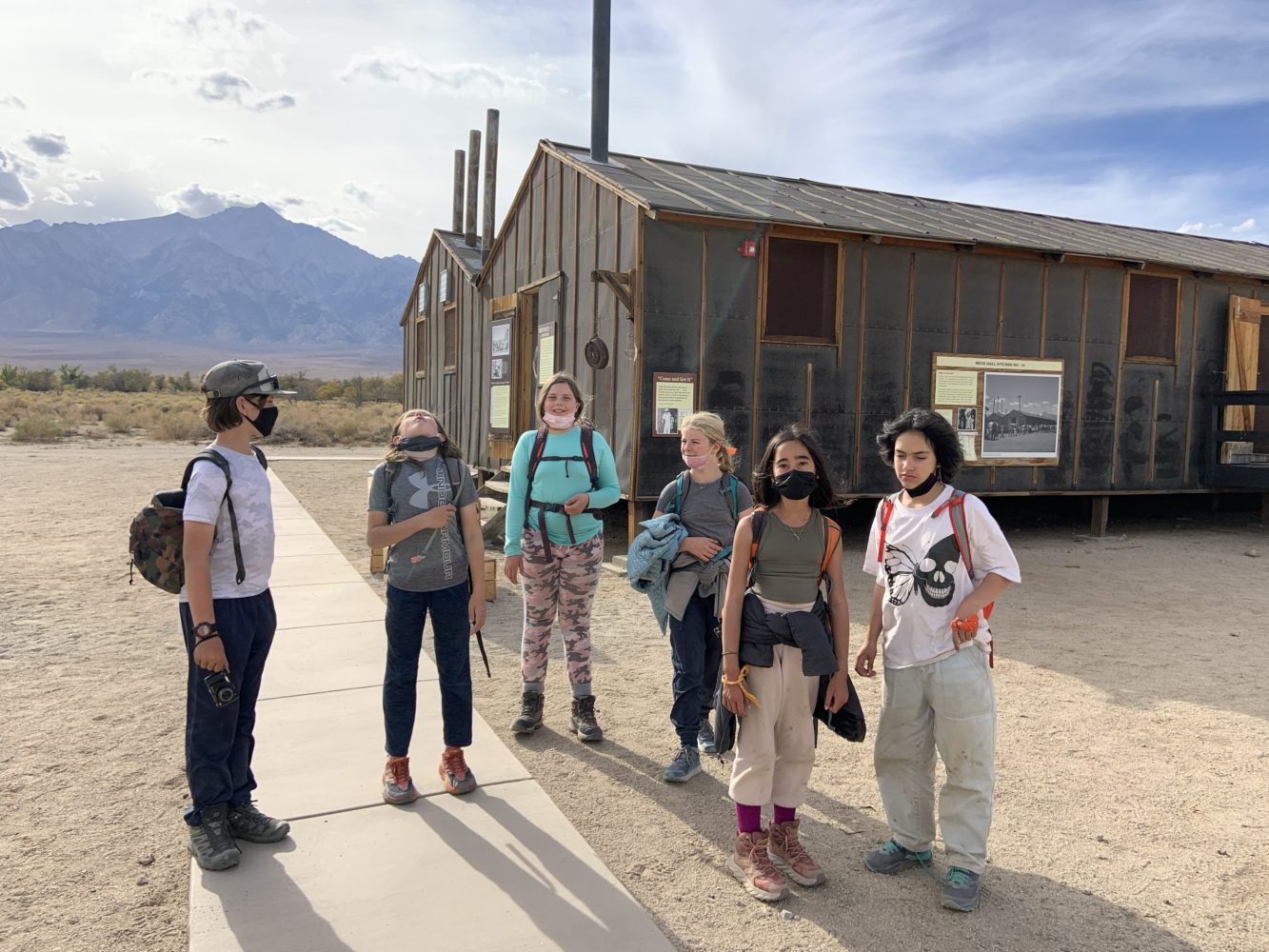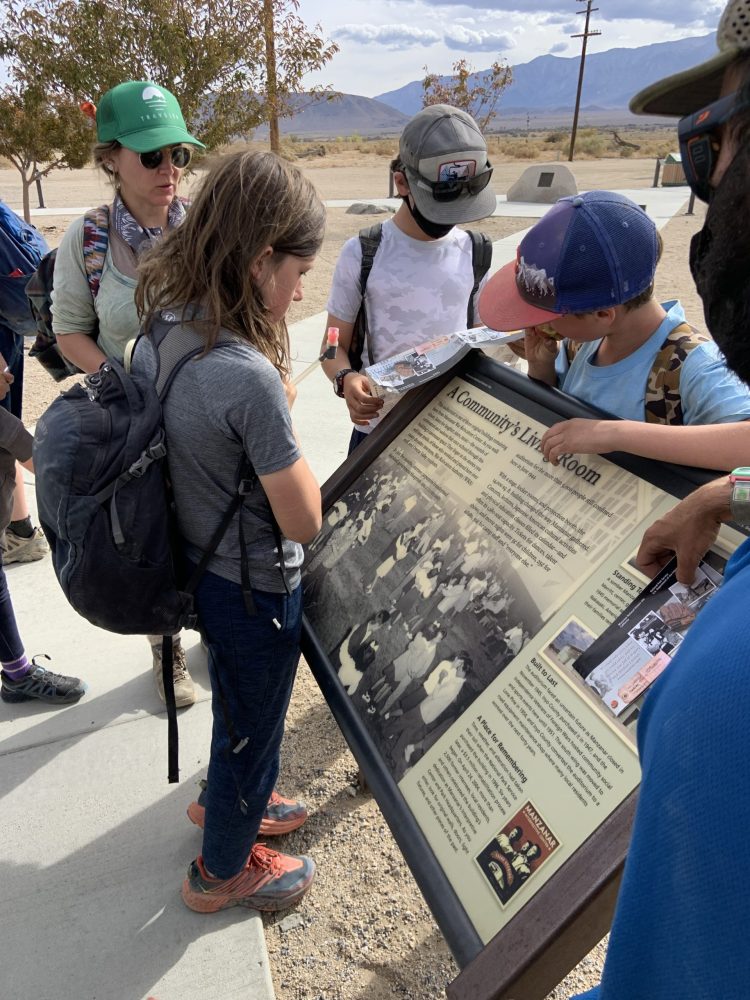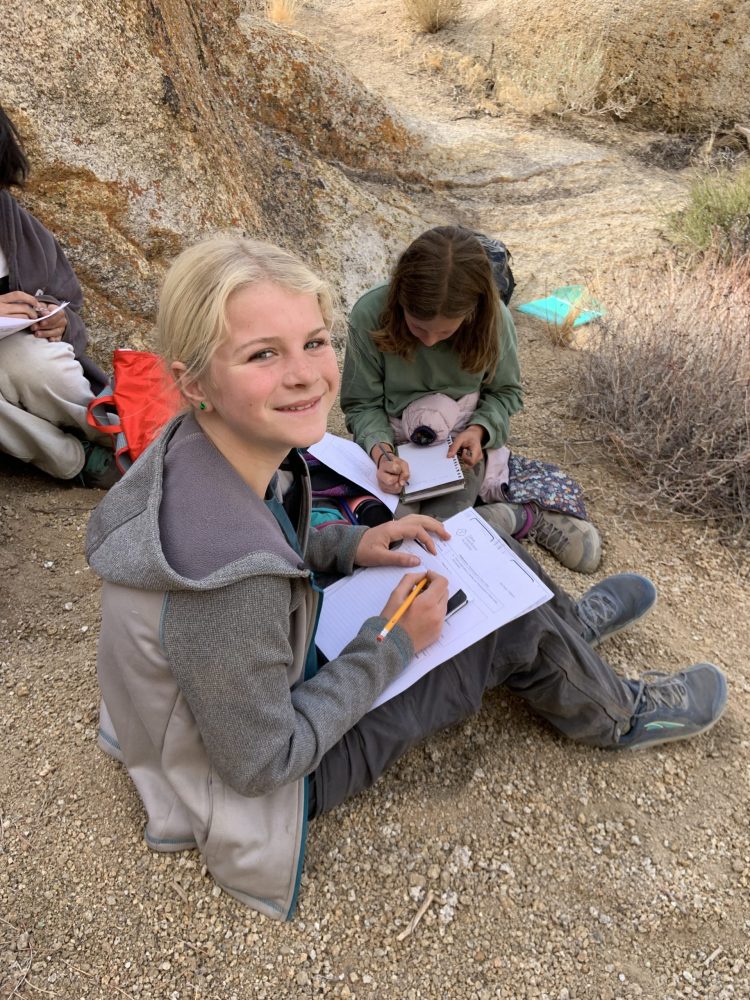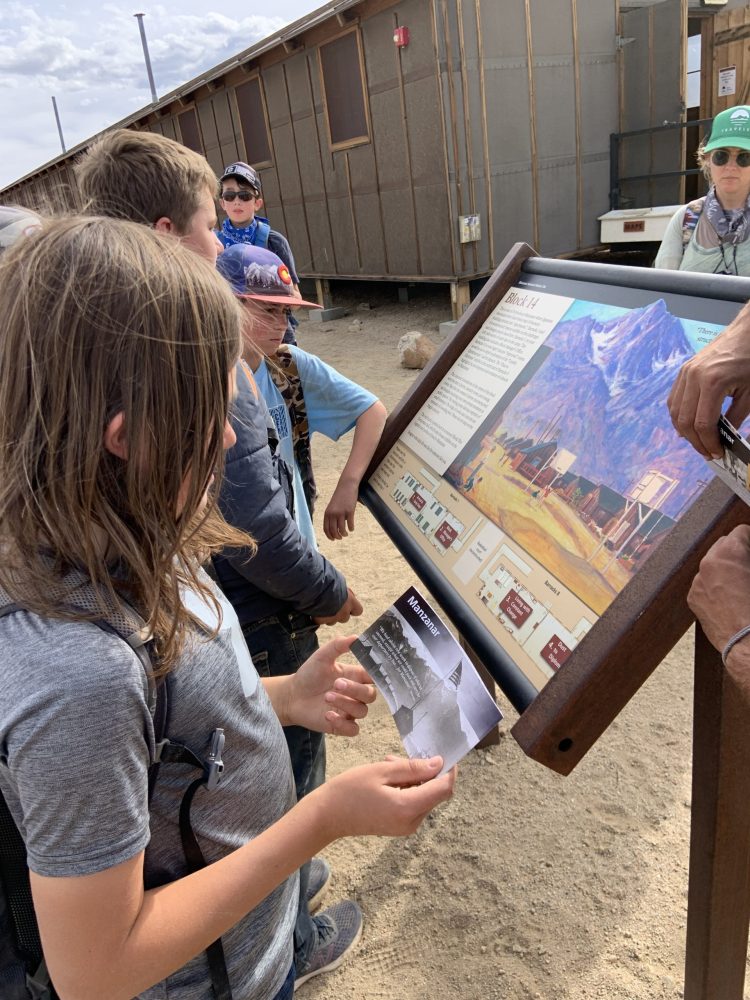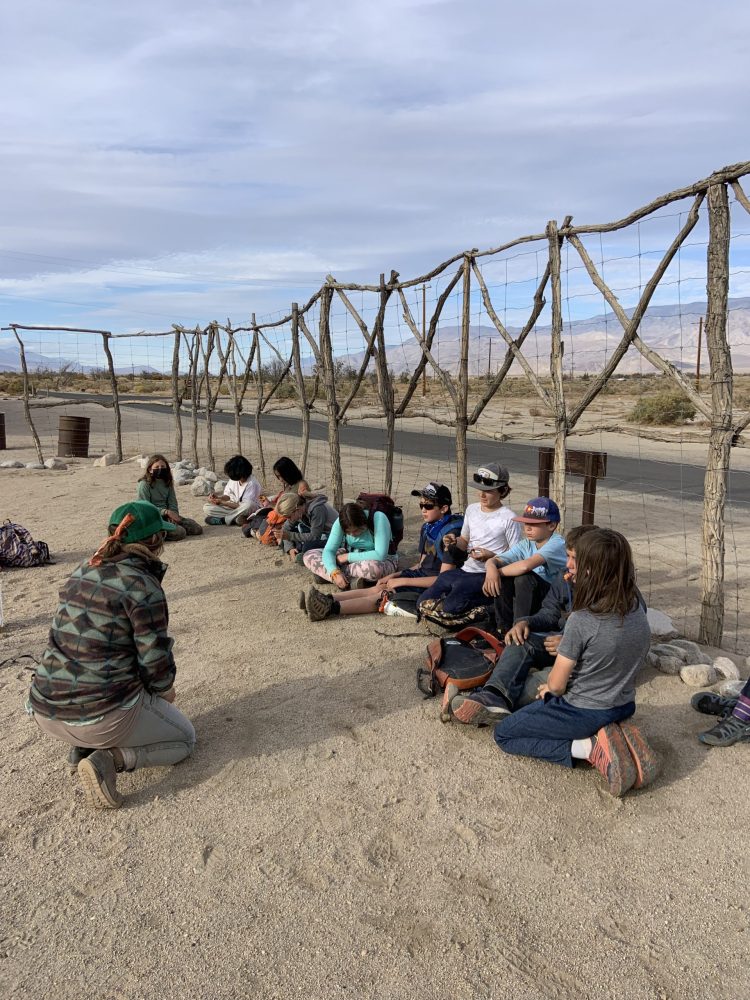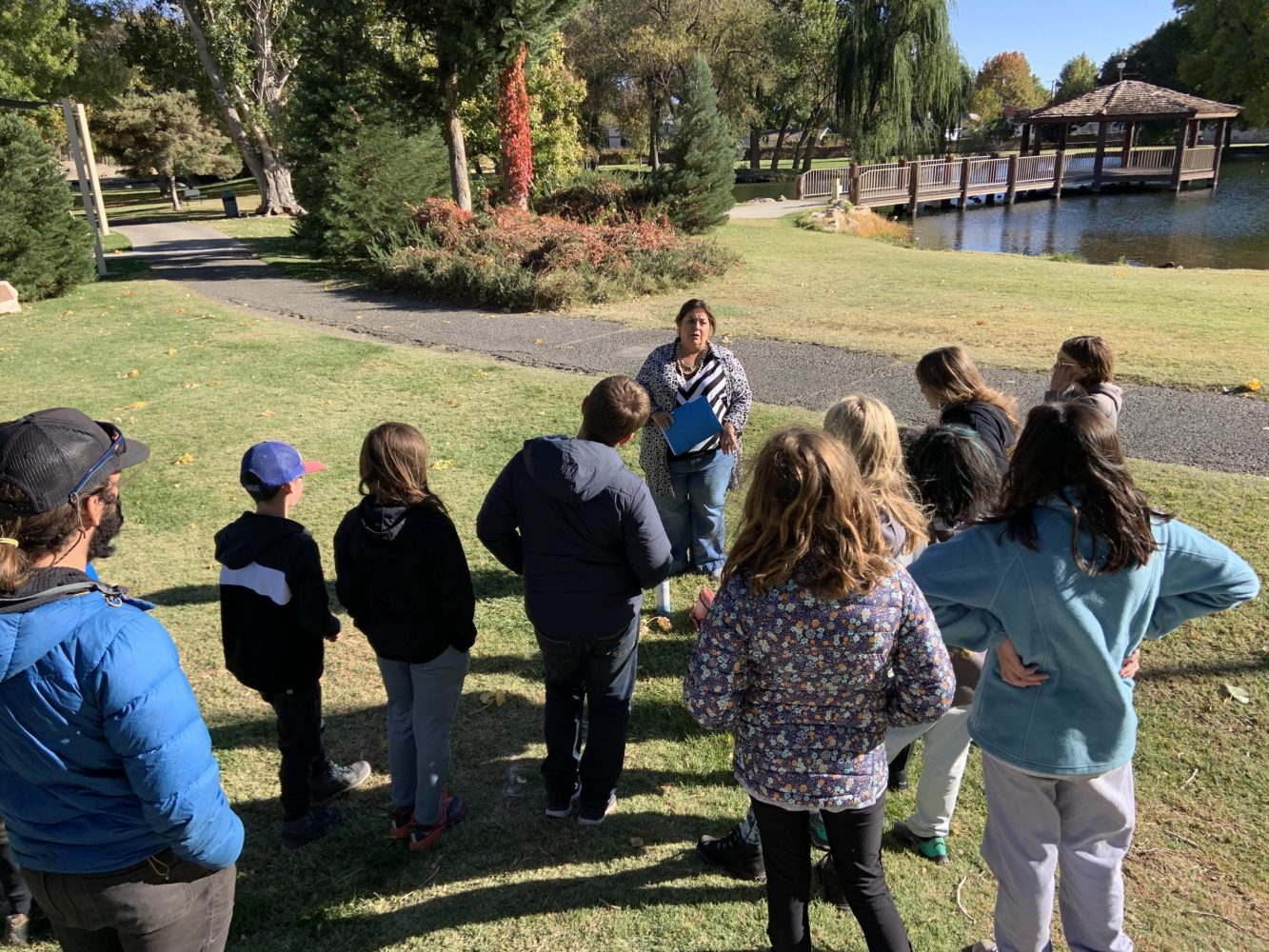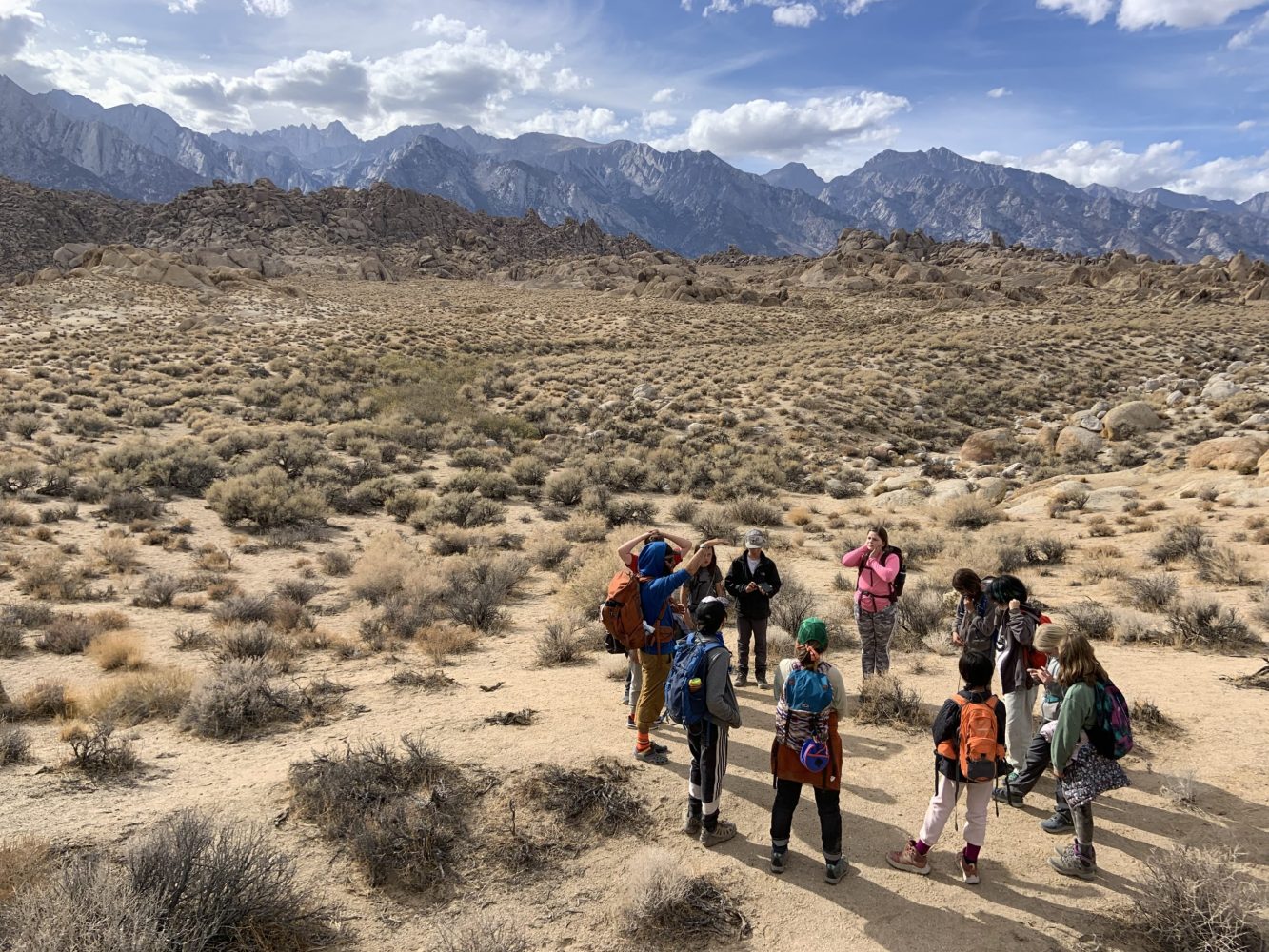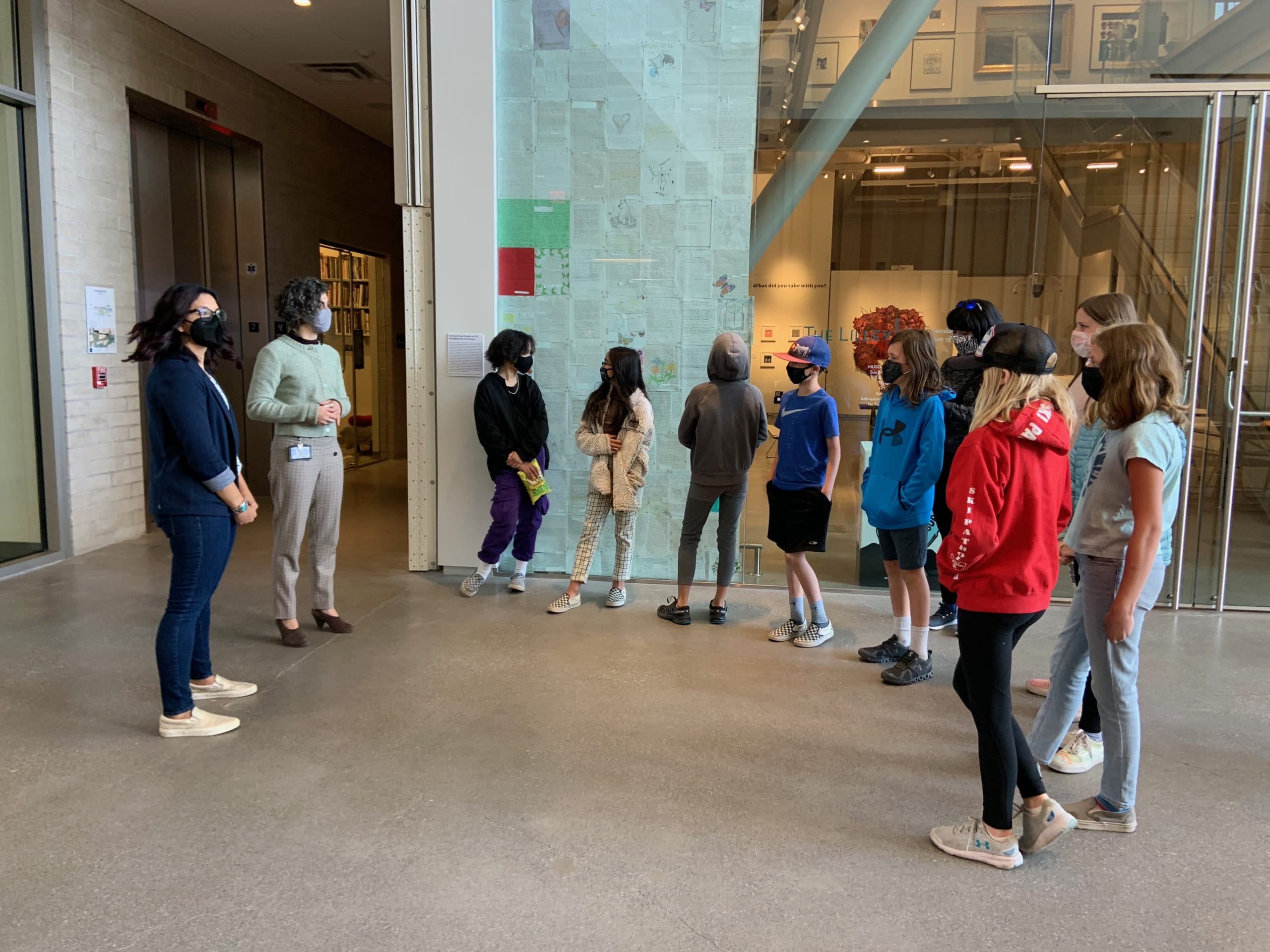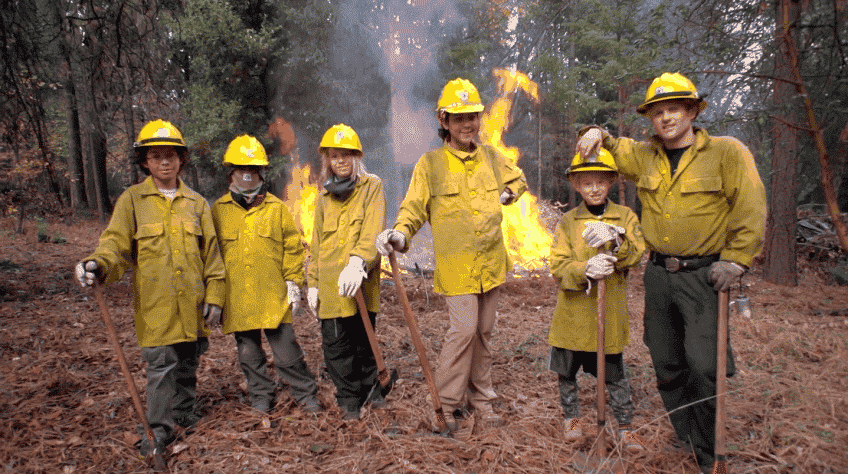6th-Graders Study the History of the Owens Valley in the Eastern Sierras
A letter of experiences reflections from the field
We, the TEA 6th graders, spent our fall fieldwork travelling, exploring, and adventuring in the Eastern Sierras. We spent time with our teachers who planned the trip: Beth Vallarino, our 6th grade ELA teacher, Heather Roenspie, our 6th grade social studies teacher, and our awesome guide, Jake Carpenter.
Our campsite was about fifteen minutes from the tiny town of Lone Pine, a town that looks like it’s plucked straight out of a 1960s western movie. We spent four nights with our tents pitched on BLM land, nestled in between rounded rocks, desert sand, and far below the jagged peaks of Mount Whitney, the highest point in the continental United States.
In class, we had been studying questions and context surrounding the ideas of: what are the historical, cultural and societal impacts of place names? What does it feel like to be uprooted? What names are represented, honored, and heard? What names are silenced or invisible?
We left campus on an unexpectedly icy and snowy Monday morning, carefully packing the coolers, food bins, and gear into vehicles. Once we left, hours passed quickly as we drove south. We passed Carson City, Bridgeport, Lee Vining, while stopping in Mammoth for lunch. We listened to podcasts on Manzanar, name pronunciation, and the history of the Owens Valley. We discussed these topics in our car groups, and talked about names, people, and places.
In the early afternoon, we stopped in Bishop to meet with Teri Red Owl, a Paiute and the Executive Director of the Owens Valley Water Commission. She told us about the history of the Owens Valley from an indigenous perspective. She shared about an 1863 march where over a thousand Paiute members were forcibly removed from the land, and marched to Fort Tehone. We learned about the painful history of the valley, and learned about people who were silenced and not given a voice during a time where land was being sought after. We thought about the people who were uprooted, and learned about the water that was diverted in the early 1900s from the Owens Valley to Los Angeles.
When we arrived at our campsite in the Alabama Hills, the sun had just set behind the granite mountains. The shade and the evening cooled down everything fast, so we quickly pitched our tents, prepared dinner, and slept with hot water bottles and handwarmers so we could sleep warm in the cold night.
The next day, we got ready to hike 1,800 feet up to Lone Pine Lake. We drove up the long, windy road to the trailhead– gaining elevation and frigid morning air. As we started hiking, we noticed a John Muir Wilderness sign. This was interesting to us because we know that John Muir’s name and voice are often heard, especially when thinking about the environment. We came to the conclusion that he is really complicated because while he did do really great things for the environment, like founding the Sierra Club, he was also a known racist and wanted to re-name places that already had indigenous names. We thought about his name, which is often honored, and thought about the indigenous name of the Owens Valley area called Payahuunadu, which means land of the flowing water. The hike was difficult, but we made it to the top of the lake. The glassy surface and shoreline of decomposed granite made it the perfect place to spend some time.
We spent the next day exploring the beautiful Alabama Hills. We worked on our communication skills, and spent time bouldering and exploring the granite arch. Everyone worked together as we scrambled up smooth granite, and scooted our way down giant rock formations. We considered empathy, and learned different ways to consider someone else’s perspective. We read about the history of the naming of the Alabama Hills, and realized that the place was named by Confederate sympathizers who named it for the CSS Alabama, a ship in the Confederacy. Many of us wondered about the relevance of the name, and thought about possible words and ways a place might be named or re-named. We talked about natural features, as well as wondered about using indigenous language to honor the people who were first here. We walked through a dry riverbed, marveling at the plants and animals thriving in this dry area.
On our last day, we met with two rangers from the Bureau of Land Management, Mark and Nichole. They were so kind, and they set up two service projects for us. We helped line trails with large boulders to help people see the markers. We also helped to pick up trash near high use areas.
We also met with Kathy Bancroft, a Paiute elder, who met with us to talk more about the history of Owens Valley. We shared out our empathy letters, and we learned more about the displacement of indigenous people in this area, and how many people were uprooted.
In the afternoon, we headed over to Manzanar. We toured the barracks, mess hall, latrine, and school yard. We saw that there was no privacy in the rooms or bathrooms. We looked at guard towers everywhere, and saw barbed wire lining fences. We really put ourselves in other people’s shoes, and saw how desolate, sad, and lonely the Japanese Americans incarcerated in this camp must have felt. We compared it to our reading of They Called Us Enemy, a graphic novel we are reading in class about George Takei’s experiences in these camps as a child.
We all believe this trip has encouraged us to grow as individuals and as friends over the past five days. Our final thoughts are below. We all had a great adventure, great learning experiences, and we are more empathetic and loving humans because of our experiences.
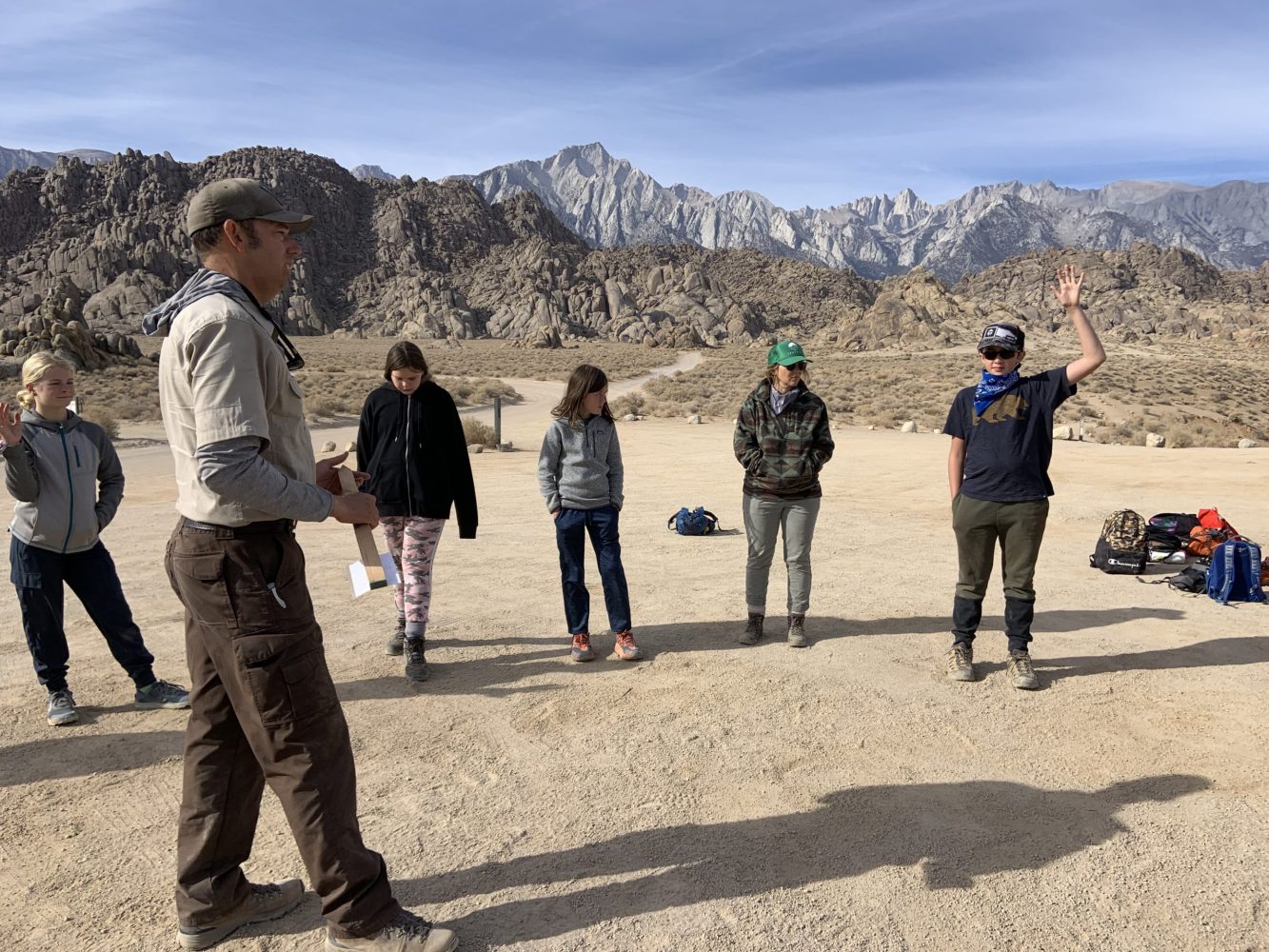
Student Reflections
Colt started the trip thinking that 5 days 4 nights of camping was a long time but now he thinks it’s doable. What will stick with him was the hike to Lone Pine Lake. The view at the top of Lone Pine lake was beautiful.
Ben never thought a hiking trip would be fun, now she thinks it could be kind of fun when it’s over. She also learned that things get better when you go past the hard parts. When you get past the hard things, everything gets better.
At the beginning of the trip Ava didn’t think she would be able to handle not showering for 5 days. She thought that everyone was really nice. She was glad we were able to go into Lone Pine, and she appreciated speaking with the indigenous experts, Cathy and Teri. She eally liked hearing what they had to say about the names.
Cree thought a tent couldn’t move seven feet in one night, but now he knows it can and it did. He also enjoyed going to see Manzanar because it gave him a new perspective.
Caylin: The trip was fun. I really liked the sunsets and sunrises. I also changed. When I changed my attitude it made my experience on the trip a lot better. I also loved talking to the experts because they were really cool.
Naia: The trip was really fun, we went on a hike that took us to a beautiful lake. The views were so pretty. I realized that things can change. I realized that your attitude can change everything.
Cooper: Bouldering was really fun. I learned TBS, which stands for technical butt scooch.
Macklin: The sunrises were beautiful. What will stick with me is everything here and this beautiful place. The rocks were lit up with a beautiful color. Hiking up Mount Whitney was really hard and remember to drink a lot of water!
Hope: I learned that Manzanar was a very sad place where Japanese Americans were uprooted. It was an uncomfortable place where they had to learn to thrive behind barbed wire fences. I really enjoyed visiting the barracks.
Camilla: I loved the beautiful views. I loved the moon set and sunrises.
Aaron: Something that stuck with me was the home to Lone Pine Lake. I loved the views of sunrise.
